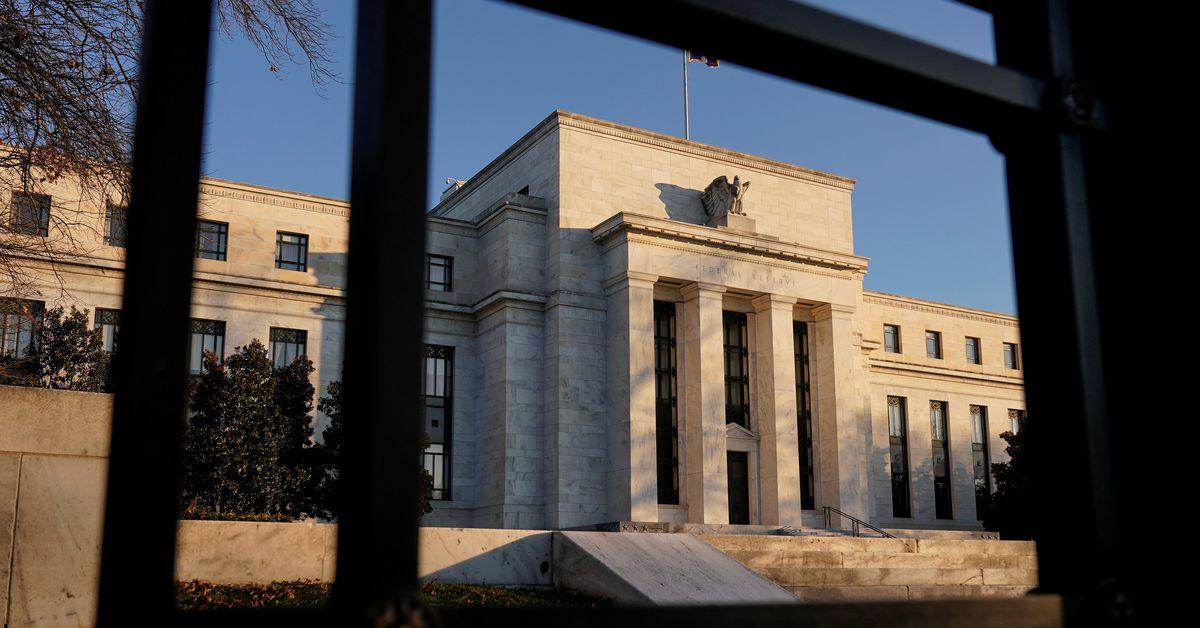Fed hikes interest rates, signals aggressive fight to curb inflation

Summary Fed lifts policy rate by quarter of a percentage point
U.S. central bank sees more rate hikes in 2022, 2023
Powell says Fed needs to limit inflation hit for families
WASHINGTON, March 16 (Reuters) – The Federal Reserve on Wednesday raised interest rates for the first time since 2018 and laid out an aggressive plan to push borrowing costs to restrictive levels next year in a pivot from battling the coronavirus pandemic to countering the economic risks posed by excessive inflation and the war in Ukraine.
The U.S. central bank’s Federal Open Market Committee kicked off the move to tighten monetary policy with a quarter-percentage-point increase in the target federal funds rate, lifting that key benchmark from the current near-zero level in a step that will ripple through a variety of other rates charged to consumers and businesses.
But more notably, new Fed projections showed policymakers ready to shift their inflation fight into high gear, with one policymaker, St. Louis Fed President James Bullard, dissenting in favor of an even more aggressive approach.
Register now for FREE unlimited access to Reuters.com Register
Most policymakers now see the federal funds rate rising to a range between 1.75% and 2% by the end of 2022, the equivalent of a quarter-percentage-point rate increase at each of the Fed’s six remaining policy meetings this year. They project it will climb to 2.8% next year – above the 2.4% level that officials now feel would work to slow the economy.
Fed Chair Jerome Powell, speaking after the end of the latest two-day policy meeting, said the economy is strong enough to weather the rate hikes and maintain its current strong hiring and wage growth, and that the Fed needed to now focus on limiting the impact of price increases on American families.
Even with Wednesday’s actions, inflation is expected to remain above the Fed’s 2% target through 2024, and Powell said officials would not shy from raising rates more aggressively if they don’t see improvement.
“The way we’re thinking about this is that every meeting is a live meeting” for a rate hike, Powell said in a news conference, emphasizing that the Fed could add the equivalent of more rate increases by also paring its massive bond holdings. “We’re going to be looking at evolving conditions, and if we do conclude that it would be appropriate to move more quickly to remove accommodation, then we’ll do so.”
Rate increases work to slow inflation by curbing demand for big-ticket items like houses, automobiles or home improvement projects that become more expensive to finance, which can also slow economic growth and potentially increase unemployment.
The economy may already be slowing for other reasons. Fed policymakers marked down their gross domestic product growth estimate for 2022 to 2.8%, from the 4% projected in December, as they began to analyze the new risks facing the global economy.
“That is just an early assessment of the effects of spillovers from the war in Eastern Europe, which will hit our economy through a number of channels,” Powell said. “You are looking at higher oil prices, higher commodity prices. That will weigh on GDP to some extent.”
Over time, Fed policy itself would begin curbing economic activity, Powell said.
1/4 Traders work, as Federal Reserve Chair Jerome Powell is seen delivering remarks on a screen at the New York Stock Exchange (NYSE) in New York City, U.S., March 16, 2022. REUTERS/Brendan McDermid Read More
“The Fed is playing catch-up and clearly recognizes the need to get back in front of the inflation situation,” said Seema Shah, chief strategist with Principal Global Investors.
“It won’t be easy – rarely has the Fed safely landed the U.S. economy from such inflation heights without triggering an economic crash. Furthermore, the conflict … has the potential to disrupt the Fed’s path. But for now, the Fed’s priority has to be price stability.”
The Fed’s preferred measure of inflation is currently increasing at a 6% annual rate.
STUBBORN INFLATION
The policy statement, which dropped a longstanding reference to the coronavirus as the most direct economic risk facing the country, marked the end of the Fed’s full-on battle against the pandemic. After two years focused largely on ensuring families and firms had access to credit, the Fed now pledges “ongoing increases” in borrowing costs to curb the highest inflation rates in 40 years.
The interest rate path shown in new quarterly projections by policymakers is tougher than expected, reflecting Fed concern about inflation that has moved faster and threatened to become more persistent than expected, and put at risk the central bank’s hope for an easy shift out of the emergency policies used to fight the fallout from the pandemic.
Major U.S. stock indexes briefly pared gains after the release of the statement and projections before recovering to close sharply higher, with the S&P 500 (.SPX) index up 2.2% on the day. read more
Two-year Treasury note yields rose to 2.002% while benchmark 10-year Treasury yields reached 2.246%, both the highest levels since May 2019, before falling back to 1.948% and 2.188%, respectively.
The dollar traded lower against a basket of currencies.
Even with the tougher rate increases now projected, the Fed expects inflation to remain at 4.3% this year, dropping to 2.7% in 2023 and to 2.3% in 2024. The unemployment rate is seen dropping to 3.5% this year and remaining at that level next year, but is projected to rise slightly to 3.6% in 2024.
The new statement said the Fed expects to begin reducing its nearly $9 trillion balance sheet “at a coming meeting.” Powell told reporters that policymakers had made “excellent progress on that front and could finalize details at their next policy meeting in May. read more
The central bank’s holdings of Treasury bonds and mortgage-backed securities ballooned after the start of the pandemic in 2020 when it began making massive monthly asset purchases to bolster the economy.
Register now for FREE unlimited access to Reuters.com Register
Reporting by Howard Schneider Editing by Paul Simao
Our Standards: The Thomson Reuters Trust Principles.






